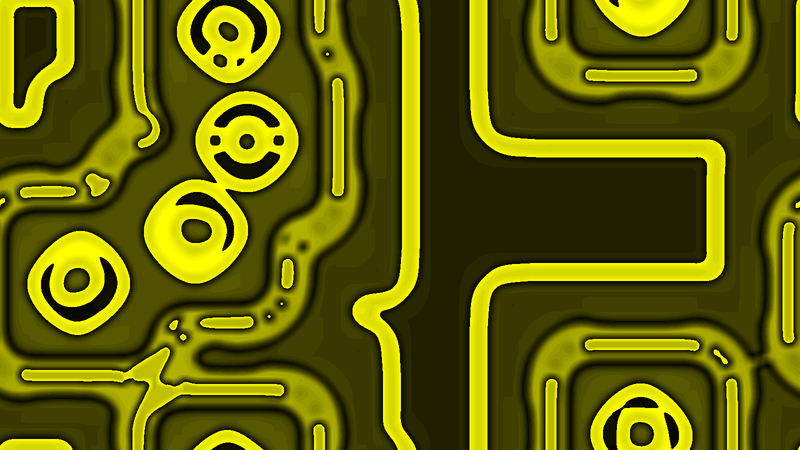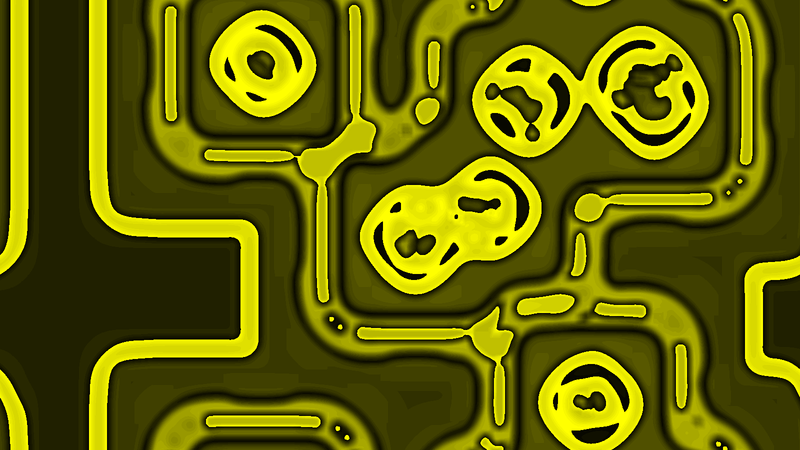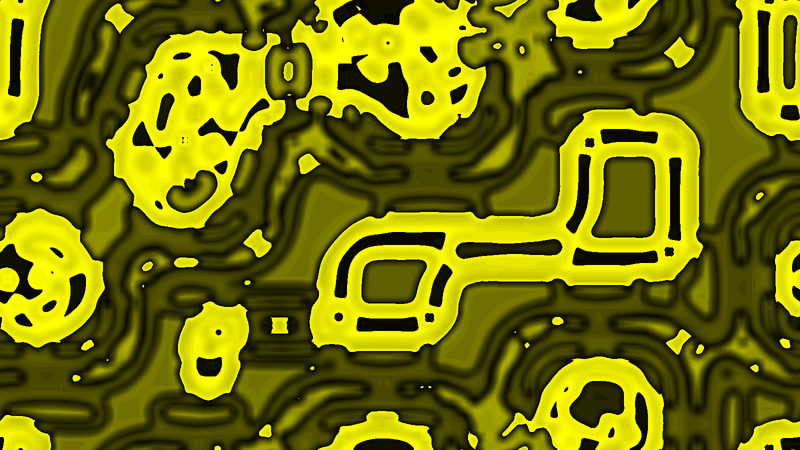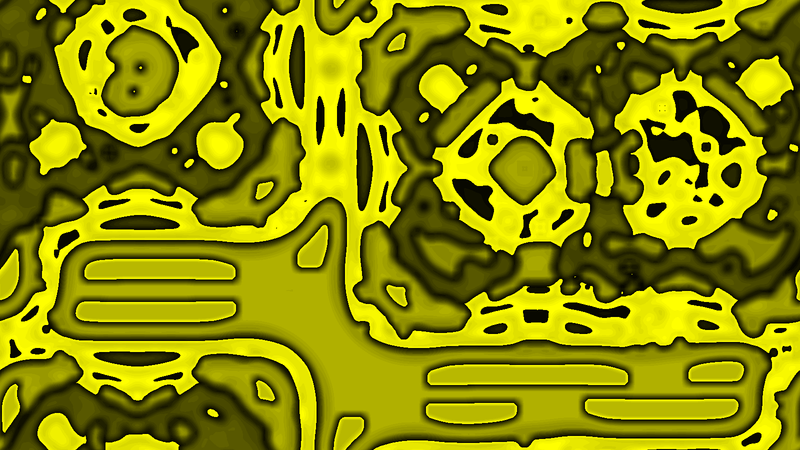A simple extended-range cellular automaton
Today I give my first example of an extended-range cellular automaton. It is an N-state range-r automaton defined by the following rule: the new value of the cell is equal to the average of the values in the range-r Moore neighbourhood (including the cell itself) plus a constant increment. Typically I use N = 10, r = 32 or 36, and an increment of 10. Starting from random noise, this produces a small number of discrete circles (enclosed by squares) that evolve and expand until the entire region is filled with a chaotic mess. The most interesting images are obtained in the middle of this process. The following images shows generation 43:

Another example (different simulation, same generation):

A bit later, the circles get rough boundaries:

Another example:

